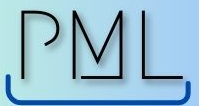Introduction
Project management methodologies shape the way projects are initiated, planned, executed, controlled, and closed. One such influential approach is the Lean methodology. Originally developed for manufacturing processes in Japan, particularly by Toyota, the Lean methodology is today applied across various industries and project types. In essence, Lean focuses on delivering value to the customer while continuously working to reduce waste. This article delves deep into the principles of Lean, its benefits, and how it’s applied in project management.
Understanding the Lean Philosophy
At its core, Lean is a mindset. It centers around creating more value for customers with fewer resources. The methodology emphasizes the efficient use of resources, elimination of waste, and a commitment to continuous improvement.
Key Principles of Lean:
Identify Value: Everything starts with recognizing what the customer values. This helps in aligning the project’s objectives with customer needs.
Map the Value Stream: It involves identifying all the steps in the process, from the inception of a product or service to its delivery, and then eliminating those that do not add value.
Create Flow: Once the value-added steps are determined, they are streamlined to ensure a continuous flow.
Establish Pull: This principle is about ensuring products or services are only created when there’s a demand, avoiding overproduction.
Pursue Perfection: This involves the relentless pursuit of waste elimination and process optimization.
Wastes in Lean
Lean methodology identifies several types of waste (often referred to by the Japanese term “Muda”). Recognizing and eliminating these wastes are crucial for a Lean-driven project.
Overproduction: Producing more than what is required or before it’s needed.
Waiting: Time wasted waiting for the next step in a process.
Transport: Unnecessary movement of products.
Over-processing: More work or higher quality than is required by the customer.
Inventory: More components, products, or systems on hand than what the customer needs.
Motion: Unnecessary movement by people (e.g., searching for tools or materials).
Defects: Effort involved in inspecting and fixing defects.
Benefits of Using Lean in Project Management
1. Enhanced Efficiency:
By continuously identifying and eliminating wastes, projects can be streamlined, ensuring that every action adds value.
2. Improved Quality:
By focusing on eliminating defects and over-processing, the quality of the end product or service is inherently improved.
3. Faster Delivery:
Reducing wastes like waiting and unnecessary transport means that products or services can be delivered faster.
4. Cost Savings:
Fewer resources are wasted, and processes are optimized, leading to significant cost reductions.
5. Increased Customer Satisfaction:
When projects are aligned with what customers value and defects are minimized, customer satisfaction invariably increases.
Implementing Lean in Project Management
Lean can be integrated into various project management phases:
1. Initiation:
From the outset, the focus should be on identifying what the customer values. The project’s objectives and deliverables should align with these values.
2. Planning:
When planning, map out the entire process and identify potential wastes. Plan the project in such a way that these wastes are eliminated or minimized.
3. Execution:
During execution, maintain a relentless focus on ensuring that every action, every task, adds value. Monitor processes and look for any emerging wastes or inefficiencies.
4. Monitoring and Control:
Use Lean metrics and tools to monitor project progress. Regularly review processes to identify areas of waste and eliminate them.
5. Closing:
At the end of the project, conduct a thorough review. Identify what went well and where wastes were introduced. Use this feedback as a basis for continuous improvement in future projects.
Lean Tools in Project Management
Several tools can be utilized to facilitate the Lean approach in project management:
Kanban Boards: Visual tools that help in tracking tasks, workflows, and progress.
Value Stream Mapping: A diagrammatic tool to visualize the flow of processes and identify wastes.
5S (Sort, Set in order, Shine, Standardize, Sustain): A methodology for organizing, cleaning, and maintaining a productive work environment.
Root Cause Analysis: A tool to identify the root causes of problems and not just address the symptoms.
Conclusion
Lean, as a project management methodology, offers a systematic approach to deliver high value to customers while minimizing waste. It’s a philosophy that can be adapted and integrated into various project types across industries. By internalizing the principles of Lean and leveraging its tools, project managers can ensure more efficient, cost-effective, and customer-centric project outcomes.

